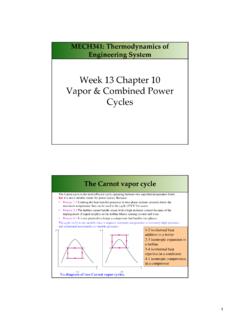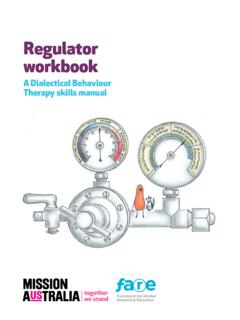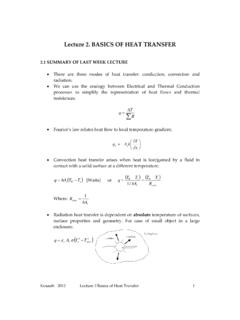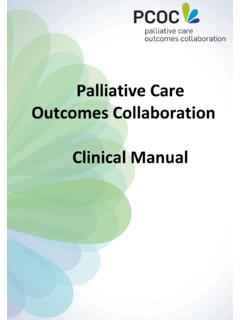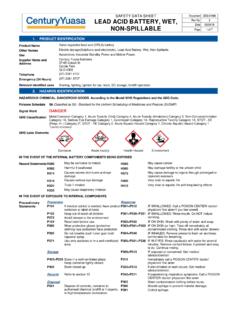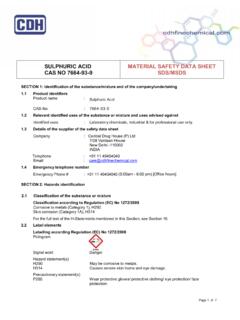Transcription of CHEMICAL SPILL MANAGEMENT GUIDELINES
1 WHS UNIT CHEMICAL SPILL MANAGEMENT GUIDELINES 2015 December Page 1 of 7 Hardcopies of this document are considered uncontrolled. Please refer to UOW website or intranet for latest version. CHEMICAL SPILL MANAGEMENT GUIDELINES Contents 1 Purpose .. 2 2 Scope .. 2 3 Definitions .. 2 4 Roles and Responsibilities .. 2 5 General .. 2 6 Defining Major or Minor 3 7 Major SPILL Response .. 4 8 Minor SPILL Response .. 4 9 Generic CHEMICAL SPILL Response .. 5 High and Extreme Risk Chemicals .. 5 10 Laboratory SPILL Kits.
2 6 11 CHEMICAL Transport and Secondary 6 12 Storage and Secondary Containment .. 6 13 Decontamination and Disposal .. 6 14 Incident Reporting .. 7 15 Related Documents and References .. 7 16 Version Control Table .. 7 CHEMICAL SPILL MANAGEMENT GUIDELINES CHEMICAL SPILL MANAGEMENT GUIDELINES 2015 December Page 2 of 7 Hardcopies of this document are considered uncontrolled. Please refer to UOW website or intranet for latest version. 1 Purpose This document outlines procedures for the MANAGEMENT of laboratory CHEMICAL spills that may occur on campus, to minimise the effects on health and safety from exposure to CHEMICAL spills and reduce the impact on the environment.
3 2 Scope These GUIDELINES apply to all workers and others who use, transport and store chemicals in laboratories at the University of Wollongong. 3 Definitions Bund A bund is a small wall or barrier that restricts the flow of substances and contains them in a particular area. SDS safety data Sheets (formerly known as Material safety data sheet MSDS) provide workers with information such as physical data (melting point, boiling point, flash point, etc.), toxicity, health effects, first aid, reactivity, storage, disposal, protective equipment, and SPILL -handling procedures.
4 4 Roles and Responsibilities Heads of School, Managers and Laboratory Supervisors are responsible for ensuring that: this procedure is implemented within their area of responsibility CHEMICAL SPILL kits and appropriate PPE are maintained, clearly labelled and checked during the workplace inspection process risk assessments and safety data sheets (SDS) are available which detail action to be taken in the event of a CHEMICAL SPILL all staff receive appropriate training to deal with CHEMICAL spills all staff are aware of the legal obligations and UOW standards regarding environmental pollution from CHEMICAL spills all major CHEMICAL SPILL incidents are reported through SafetyNet.
5 Staff and students are responsible for ensuring that they: do not place themselves or others at risk of injury keep clear of a SPILL when alerted to an incident clean up a CHEMICAL SPILL immediately and/or report the SPILL to their supervisor know where safety data sheets are kept, or how they can be accessed follow specific written procedures provided for SPILL control. 5 General A worker handling a hazardous CHEMICAL should be aware of the correct procedures in the event of a SPILL . This information can be sourced through a SDS and if necessary explicitly detailed in a documented safe work procedure.
6 Controls, such as double containment, bunding, drip trays or raised edges around work areas, must be in place to minimise the effects of a CHEMICAL SPILL . SPILL MANAGEMENT and response strategies should be included during laboratory emergency planning with personnel trained in the procedures. A quick response by laboratory personnel to a CHEMICAL SPILL is likely to limit the consequences, whether it is a minor or major SPILL . CHEMICAL SPILL MANAGEMENT GUIDELINES CHEMICAL SPILL MANAGEMENT GUIDELINES 2015 December Page 3 of 7 Hardcopies of this document are considered uncontrolled.
7 Please refer to UOW website or intranet for latest version. All laboratory workers should wear appropriate personal protective clothing and equipment (PPCE) when attending to a CHEMICAL SPILL , for example, lab coats, gloves, safety glasses, goggles, face shields and/or respirator as appropriate to the risk. When preparing an emergency procedure for use of a hazardous substance you should consider the immediate danger to persons and ensure effective containment and clean up, appropriate disposal of waste material and notification to all relevant authorities.
8 6 Defining Major or Minor SPILL CHEMICAL SPILL MANAGEMENT GUIDELINES CHEMICAL SPILL MANAGEMENT GUIDELINES 2015 December Page 4 of 7 Hardcopies of this document are considered uncontrolled. Please refer to UOW website or intranet for latest version. Spills will be either: minor or major, depending on the volume, location and hazard of the substance spilt. If any of the following apply, the SPILL is considered major. 1. Quantity As a guide, if more than 100 ml/10 grams of highly hazardous CHEMICAL (carcinogen) or 1 litre/100 grams of a volatile or flammable solvent, reactive or corrosive ( acid or base) liquid/solid.
9 For some substances, for example mercury or 40% HF evacuation should be consider at < 100mL. 2. Hazard - If the CHEMICAL presents an immediate threat to human health or safety or the environment; is unknown, or is an immediate fire hazard such as an uncontrolled gas leak. 3. Location If the CHEMICAL is outside of the laboratory or outside of the area where the material is normally used, and/or there is no trained person available to clean up the SPILL . A major CHEMICAL SPILL will usually result in the immediate evacuation of the area, if not the entire building.
10 For example: the uncontrolled release of ammonia from a gas cylinder in an unventilated enclosed area. The volume is large and may represent a high risk to persons in the area. A minor CHEMICAL SPILL is one that the individual can clean up. For example: 5ml of concentrated sulphuric acid in a fume cupboard. Although the risk from concentrated acid is high it is only a small volume that can easily be neutralised and removed. 7 Major SPILL Response Protect yourself. Don t touch harmful substances.

